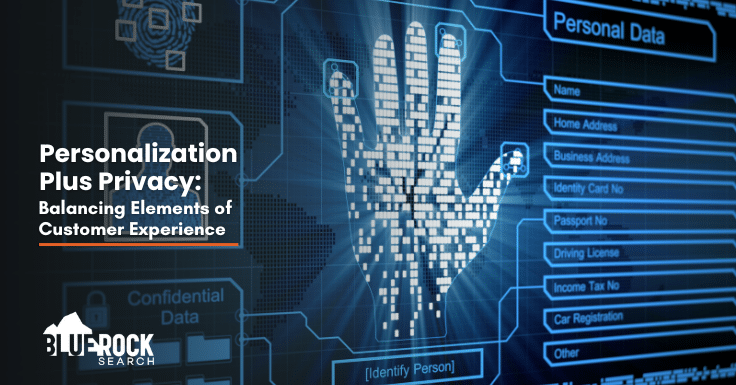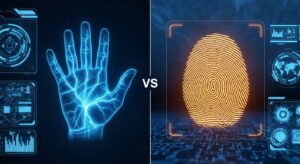Biometric customer personalization uses unique biological traits to tailor experiences. This approach focuses on enhancing customer interactions through technology that recognizes individuals.
As businesses strive to connect more deeply with their customers, personalization has become essential. Biometric technology, such as fingerprint scanning and facial recognition, offers a new way to achieve this. It allows companies to gather data about individual preferences and behaviors.
This creates more relevant experiences for customers. Imagine walking into a store and being greeted by name, with recommendations based on your past purchases. This level of personalization can build loyalty and improve satisfaction. Understanding how biometrics work can help businesses create meaningful connections with their customers. Exploring this topic reveals both opportunities and challenges in the world of customer engagement.

Credit: www.linkedin.com
The Rise Of Biometric Technology
Biometric technology is changing how businesses interact with customers. It uses unique physical traits for identification. This technology is now part of everyday life.
From smartphones to security systems, biometrics is everywhere. It helps create personalized experiences. This is important for building customer loyalty. As it grows, understanding its impact is essential.
From Sci-fi To Reality
Biometric technology once seemed like science fiction. Movies showed futuristic devices scanning faces and fingerprints. Today, this technology is real and widely used.
Facial recognition is common in smartphones. Fingerprint scanners are standard in many devices. Voice recognition is also becoming popular. These technologies make life easier and safer.
Key Biometric Technologies
Several key biometric technologies are shaping customer experiences. Each has its own benefits and uses.
Facial recognition identifies people through their unique features. It is fast and efficient. Fingerprint scanning offers secure access. It is widely trusted in many industries.
Voice recognition allows users to interact naturally. This technology understands spoken commands. Iris scanning uses patterns in the eye for identification. It is highly accurate.
These technologies work together to improve personalization. They help businesses understand their customers better. As biometrics evolve, expect even more changes in customer service.

Credit: www.linkedin.com
Biometrics In Personalization
Biometric technology is changing how businesses connect with customers. It offers a way to personalize services based on unique human traits. These traits include fingerprints, facial recognition, and voice patterns. This approach enhances customer experience and satisfaction.
More brands are using biometrics to tailor their services. Customers enjoy a more customized experience. This leads to stronger loyalty and trust. Personalization feels more genuine and relevant. Customers appreciate this personal touch.
Personalization: The New Norm
Today, personalization is expected. Customers want brands to understand them. They seek services that match their needs. Generic offers no longer attract attention. Tailored experiences stand out.
With biometrics, businesses can gather data easily. This helps them create unique profiles for each customer. Personalization becomes seamless and effective. Customers feel valued and recognized.
Biometrics: The Ultimate Personal Touch
Biometric data adds a personal touch. It allows for deeper insights into customer preferences. Brands can predict what customers want. This leads to better recommendations.
Facial recognition can greet customers by name. Voice recognition can understand individual tones and emotions. These actions make customers feel special. They feel the service is designed just for them.
Biometric personalization builds trust. Customers feel safer when using their unique traits. It shows that brands care about their security. This trust leads to long-term relationships.
Types Of Biometric Data
Biometric data helps businesses understand their customers better. This data uses unique physical traits. It personalizes services and enhances security. Here are the main types of biometric data:
Fingerprint Recognition
Fingerprint recognition is one of the oldest biometric methods. It uses the unique patterns on a person’s fingertips. This method is accurate and reliable.
- Used in smartphones for unlocking screens.
- Common in security systems.
- Fast and easy to use.
Fingerprint scanners capture and analyze these patterns. They create a digital template. This template matches the user’s fingerprint for authentication.
Facial Recognition
Facial recognition is becoming more popular. It uses facial features to identify a person. The system analyzes key points on the face.
| Key Features | Description |
|---|---|
| Accuracy | High accuracy in identifying individuals. |
| Speed | Instant recognition in real-time. |
| Application | Used in security, marketing, and social media. |
Facial recognition can enhance customer experience. It tailors services based on customer preferences.
Voice Analysis
Voice analysis examines a person’s voice patterns. It identifies emotional tone and speech characteristics. This method is useful for customer service.
- Detects customer emotions during calls.
- Helps in personalizing responses.
- Improves customer satisfaction.
Voice analysis can guide businesses in better communication. It provides insights into customer needs and preferences.
Credit: ftxidentity.com
Benefits Of Biometric Personalization
Biometric personalization offers many benefits for both businesses and customers. It helps create a more tailored experience. Customers enjoy easier access and higher security. Let’s explore the key benefits of biometric personalization.
Enhanced User Experience
Biometric personalization makes interactions smoother. Users can log in quickly using fingerprints or facial recognition. No more remembering complex passwords. This simplicity leads to higher satisfaction. Customers feel more valued and understood.
Improved Security
Security is a major concern for everyone. Biometric data is unique to each person. This makes it harder for fraudsters to gain access. Traditional passwords can be stolen or guessed. Biometric methods provide an extra layer of protection.
Streamlined Processes
Biometric systems speed up processes. Customers can complete transactions faster. No long forms or waiting times. Businesses can serve more clients in less time. This efficiency boosts productivity and enhances customer loyalty.
Real-world Applications
Biometric customer personalization is changing how businesses connect with users. Different industries are using this technology. It helps them understand customers better. Here are some real-world applications.
Banking And Finance
Biometric technology is popular in banking. Fingerprint scanning and facial recognition keep accounts safe. Customers can access services quickly and securely.
Some banks use voice recognition for phone services. This adds another layer of security. Personalized banking experiences make customers feel valued.
Retail Innovations
Retailers are using biometrics to enhance shopping. Stores can track shopping habits through facial recognition. This helps them create personalized offers for each customer.
Some shops use fingerprint scanners for quick checkouts. This speeds up the buying process. Customers enjoy a smoother shopping experience.
Healthcare Personalization
In healthcare, biometrics play a key role. Hospitals use fingerprints for patient identification. This reduces errors in medical records.
Wearable devices track health data. They collect biometrics like heart rate and activity levels. This data helps doctors provide personalized treatment plans.
Challenges And Considerations
Biometric customer personalization offers many benefits. It also brings challenges. Companies must think carefully about privacy, ethics, and technology. Understanding these challenges is vital for success.
Privacy Concerns
Privacy is a major issue with biometric data. People worry about how their data is used. Companies collect fingerprints, facial scans, and voice patterns. This data is sensitive and personal.
Some key privacy issues include:
- Data Breaches: Hacking can expose personal information.
- Informed Consent: Customers may not fully understand how their data is used.
- Data Storage: Long-term storage of biometric data can be risky.
Ethical Implications
Using biometric data raises ethical questions. Companies must treat customers fairly. They should not misuse data for profits.
Consider these ethical points:
- Discrimination: Biometric systems can unintentionally favor certain groups.
- Surveillance: Excessive monitoring can lead to a loss of privacy.
- Data Ownership: Customers should know who owns their biometric data.
Technical Limitations
Technical issues can affect biometric systems. These limitations can impact accuracy and user experience.
| Limitation | Description |
|---|---|
| False Positives | Incorrectly identifying a user can cause security issues. |
| Environmental Factors | Lighting or noise can affect recognition accuracy. |
| Device Compatibility | Not all devices support advanced biometric systems. |
Futuristic Personalization Trends
Biometric customer personalization is evolving. New trends are shaping how businesses interact with customers. These trends use technology to create unique experiences. They focus on the needs and feelings of each person. Let’s explore some key trends in this area.
Predictive Personalization
Predictive personalization uses data to guess what customers want. It looks at past behavior and preferences. This helps businesses offer relevant products or services. For example, online stores suggest items based on previous purchases. This makes shopping easier and faster for customers.
Algorithms analyze data quickly. They identify patterns that humans might miss. Businesses can then target their marketing efforts. This leads to higher customer satisfaction. Predictive personalization builds trust. Customers appreciate when brands understand their needs.
Adaptive Interfaces
Adaptive interfaces change based on user behavior. They create a more tailored experience. For example, a website may change its layout. It adapts to what the visitor prefers. This helps customers find what they need quickly.
These interfaces learn from interactions. They adjust to improve user experience. This makes technology feel more personal. Customers feel valued when their preferences are considered.
Emotion Recognition
Emotion recognition uses technology to read feelings. It can analyze facial expressions and voice tones. This helps businesses understand customer moods. For instance, a customer service chatbot might adjust its tone. It could respond differently based on how a user feels.
This technology creates empathy in interactions. Businesses can connect with customers on a deeper level. Emotion recognition enhances personalization. It leads to better customer experiences.
Best Practices For Implementation
Implementing biometric customer personalization needs careful planning. Following best practices ensures success. Focus on user trust and data security. Adapt to changes in technology and customer needs.
User Consent And Transparency
Always seek user consent before collecting biometric data. Explain what data you collect and why. Clear communication builds trust. Users feel more comfortable sharing their information. Make consent easy to understand. Use simple language and clear options.
Data Security Measures
Protect biometric data with strong security measures. Use encryption to safeguard sensitive information. Regularly update security protocols. Train staff on data protection practices. Monitor systems for potential breaches. Quick action can prevent data loss and protect users.
Continuous Improvement And Adaptation
Always look for ways to improve your biometric systems. Gather user feedback to understand their experiences. Adapt your methods based on changing technology. Stay informed about new trends in biometrics. Regular updates keep your system relevant and effective.
Frequently Asked Questions
What Is Biometric Customer Personalization?
Biometric customer personalization uses unique biological traits for tailored experiences. It includes facial recognition, fingerprints, and voice patterns. This technology helps businesses understand customer preferences better. As a result, it enhances user engagement and satisfaction, making interactions more relevant and efficient.
How Does Biometric Data Enhance User Experience?
Biometric data enhances user experience by offering personalized services. It allows for quick authentication and tailored recommendations based on individual behaviors. This leads to smoother transactions and improved customer loyalty. Ultimately, biometric personalization creates a more enjoyable and secure interaction with brands.
What Are The Benefits Of Biometric Personalization?
The benefits of biometric personalization include increased security and improved customer engagement. It helps companies collect accurate data for better insights. Additionally, it streamlines processes, reducing friction during transactions. Overall, this approach fosters trust and encourages long-term relationships between brands and customers.
Is Biometric Data Safe For Customers?
Yes, biometric data can be safe for customers when handled correctly. Companies must implement strong security measures to protect this sensitive information. Data encryption and secure storage are essential. Transparency about data usage also builds customer trust and ensures compliance with regulations.
Conclusion
Biometric customer personalization offers great benefits. It helps businesses understand their customers better. By using unique identifiers, companies can tailor their services. This builds trust and improves customer satisfaction. Simple and secure methods make it easy for users. As technology advances, more businesses will adopt these practices.
Embracing biometric personalization can lead to stronger customer relationships. It’s a smart way to meet modern demands. Focus on the future. Start exploring biometric options today. Your customers will appreciate it.








